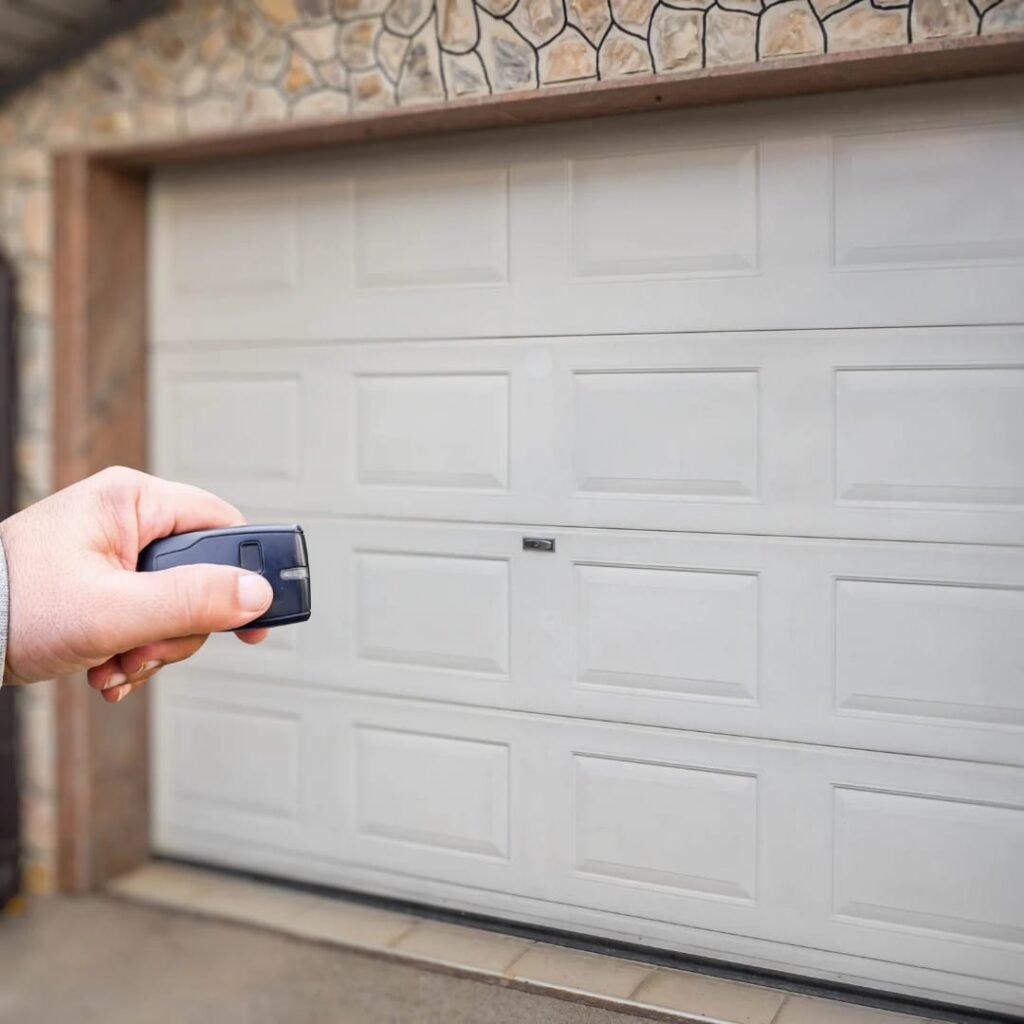Best Practices for Garage Door Panel Replacement
What You Need to Know
Garage door panels play a major role in your home’s curb appeal, insulation, and security. When a panel gets damaged—whether from weather, wear and tear, or a simple parking mishap—knowing the best way to handle a replacement is essential.
In this blog, we’ll cover the best practices for garage door panel replacement, including how to assess damage, when to repair or replace, and how to choose the right materials and professionals. Whether you’re a homeowner looking to DIY or hire a pro, this guide will help you avoid common mistakes and ensure a smooth process.

1. Inspect the Damage Thoroughly
Before jumping into repairs or replacements, take a close look at the damage:
Is the panel dented, cracked, or bent?
Are there multiple panels affected?
Are the hinges, tracks, or door opener showing signs of stress?
Is there water damage, rust, or mold?
Best Practice: Don’t assume it’s just cosmetic. Even small dents can interfere with the door’s operation. Take detailed photos and consider a professional inspection to determine the extent of the damage.
2. Know When to Repair vs Replace
Not all panel damage requires full replacement. Sometimes, minor dents can be repaired with specialized tools, but other times a full panel swap is necessary.
Replace the panel if:
The damage compromises the door’s structure.
There’s a large dent, crack, or rot.
The panel has detached or misaligned.
You’re dealing with rust or mold that can’t be cleaned or sealed.
Repair the panel if:
The damage is minor and purely cosmetic.
You have access to the right tools and experience.
Best Practice: Replacing a panel is often more cost-effective than multiple temporary repairs.3.
3. Match Replacement Panels Carefully
When replacing a panel, it’s crucial that the new one matches the existing door in:
Material: Common types include steel, aluminum, wood, vinyl, and composite.
Design/Style: Raised panel, flush panel, carriage style, etc.
Color & Finish: For a seamless appearance.
Brand & Model: Not all doors are compatible with universal panels.
Best Practice: Contact the original manufacturer or garage door service provider to ensure compatibility.
4. Always Check for Underlying Issues
Sometimes, panel damage is a symptom of a larger problem:
Broken torsion springs
Misaligned tracks
Worn cables or rollers
Uneven door movement
Best Practice: Always inspect the entire door system when replacing a panel. Fixing a panel without correcting the root cause can lead to repeated damage.
5. Hire a Professional (When Needed)
Garage doors are heavy and operate under high tension. Improper handling of springs or panels can cause serious injury or further damage.
You should hire a professional if:
You’re not experienced with garage door systems.
The damaged panel is connected to the torsion spring system.
Multiple panels need replacing.
Your door is custom or older and parts are hard to find.
Best Practice: Even if you’re handy, a quick consult with a professional can save you time, money, and risk.
6. Consider Upgrading Your Panels
If your door is older or multiple panels are damaged, it might be worth upgrading the entire door or panels to:
Improve insulation (energy efficiency)
Enhance curb appeal
Add security features
Reduce future maintenance
Best Practice: Ask about insulated or reinforced panel options. They offer better weather protection and long-term durability.
7. Understand the Costs Involved
Panel replacement costs vary based on material, labor, and availability:
Steel or aluminum panels: $100–$300
Wood panels: $200–$500
Labor: $100–$300
Custom panels: Higher, especially if color matching or unique designs are involved
Best Practice: Get multiple quotes and ensure the price includes both parts and labor.
8. Maintain Your Garage Door After Replacement
Once your new panel is installed, protect your investment:
Clean regularly with mild soap and water.
Lubricate moving parts every 6 months.
Inspect panels, tracks, and springs seasonally.
Touch up paint or finish to prevent rust or sun damage.
Best Practice: Set reminders for seasonal inspections to prevent small issues from becoming expensive repairs.
Final Thoughts
Replacing a garage door panel isn’t just about looks—it’s about maintaining the safety, efficiency, and value of your home. By following these best practices, you’ll ensure the job is done right, whether you’re handling it yourself or hiring a pro.
Need expert help with your garage door panel replacement? Contact our experienced team today for a free inspection and get the job done with quality and care.
